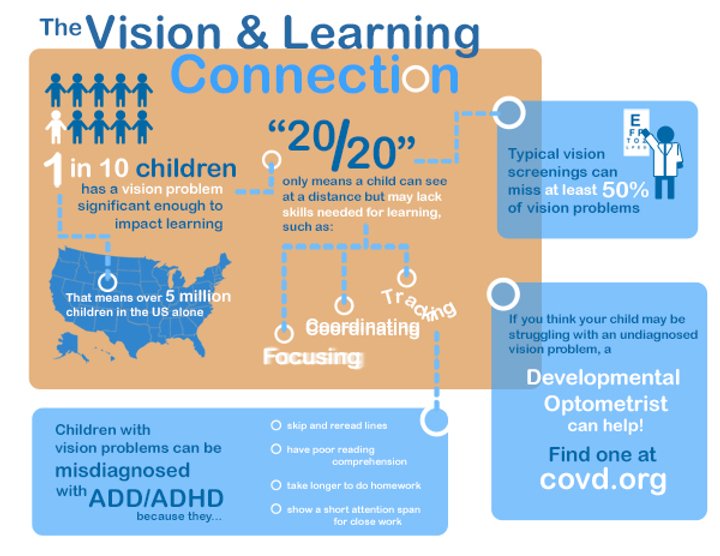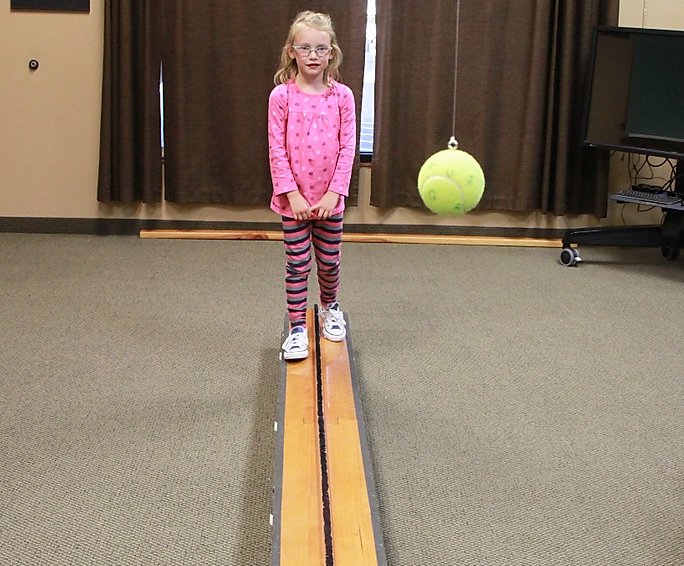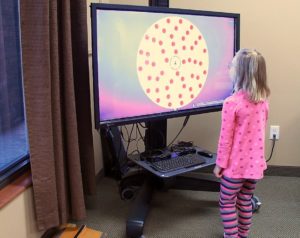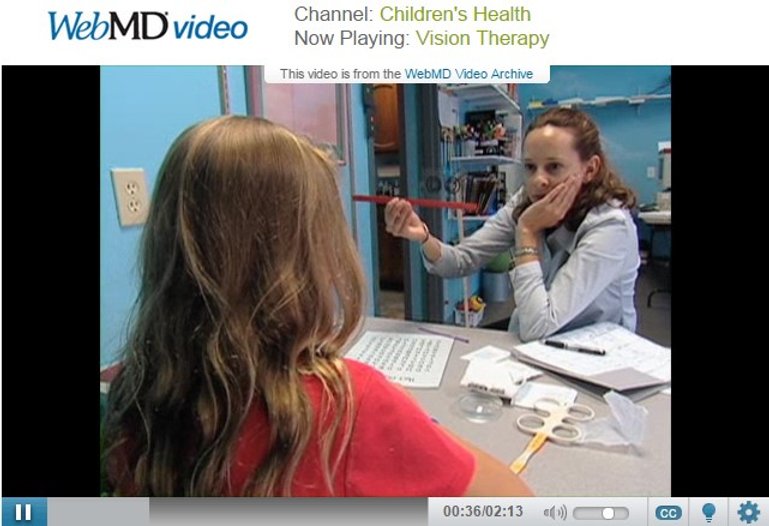Vision Therapy
Vision Therapy to improve and enhance vision performance
The ability to learn in school, achieve on the job, and enjoy sports and recreation depends upon efficient vision. More than the ability to see clearly, vision is the process of deriving meaning from what is seen. It involves fixation and eye movement abilities, accommodation (eye focusing), convergence (eye aiming), eye-hand/eye-body coordination, visual perception and visual-motor integration.
Optometric Vision Therapy is a program that strives to correct, improve, enhance, and develop visual performance through prescribed treatment programs designed to build new neural pathways.
Highly trained staff guide patients to learn to use their visual abilities in new or more efficient ways with various vision procedures that utilize cutting-edge instrumentation such as the Sanet Vision Integrator, and therapeutic lenses, prisms, filters and visual-motor-kinesthetic integration.
Individualized for the visual needs of each patient, vision therapy corrects existing vision problems that affect learning, sports performance, and daily life.
Vision and Learning
While learning occurs through a number of complex and interrelated processes, vision plays a key role. Many signs, symptoms, and behaviors associated with learning disabilities are similar to those caused by vision problems. This is why it is so important that a comprehensive vision examination be part of the interdisciplinary evaluation of all children who are failing to succeed in school.

Healthy vision is more than 20/20 eyesight
-
- Eye movement control
- Simultaneous focus at far
- Sustaining focus at far
- Simultaneous focus at near
- Sustaining focus at near
- 6. Simultaneous alignment at far
- Sustaining alignment at far
- Simultaneous alignment at near
- Sustaining alignment at near
- Central vision (visual acuity)
- Peripheral vision
- Depth awareness
- Color perception
- Gross visual-motor
- Fine visual-motor
- Visual perception
- Visual integration
Signs or symptoms of potential vision problems
Physical signs and symptoms and poor learning performance can indicate a vision problem that could benefit from vision therapy.

Physical signs
- Frequent headaches or eye strain
- Blurring of distance or near vision, particularly after reading or other close work
- Avoidance of close work or other visually demanding tasks
- Poor judgment of depth
- Turning of an eye in or out, up or down
- Tendency to cover or close one eye, or favor the vision in one eye
- Double vision
- Poor hand-eye coordination
- Difficulty following a moving target
- Dizziness or motion sickness
Performance problems include
- Poor reading comprehension
- Difficulty copying from one place to another
- Loss of place, repetition, and/or omission of words while reading
- Difficulty changing focus from distance to near and back
- Poor posture when reading or writing
- Poor handwriting
- Can respond orally but can’t get the same information down on paper
- Letter and word reversals
- Difficulty judging sizes and shapes
Children should be referred for a comprehensive eye exam whenever visual problems are noticed or if they are not achieving their potential.

Vision and Sports Performance
Vision, just like speed, endurance, and strength, is an important factor in sports performance. The eyes direct the dynamic movement of the body and visual problems can translate into decreased sports performance.
Beyond simply seeing clearly while at rest, the following are the visual skills needed for sports performance:
- Dynamic visual acuity: seeing moving objects clearly
- Eye tracking: the ability to “keep your eye on the ball”
- Eye focusing: the ability to change focus from one object to another quickly and clearly
- Peripheral awareness: seeing the ball out of the corner of your eye
- Depth perception: the ability to quickly and accurately judge the distance and speed of objects
- Eye-hand or eye-body coordination: the ability to use our eyes to effectively direct the movement of our hands or body
Sports vision training works to improve the visual abilities of athletes that are most necessary for excellence in their sports. Activities are sport-specific and customized for each athlete. For example, a program for a golfer will emphasize visual alignment and depth perception activities to enhance their ability to see breaks in the greens, while eye-hand coordination and dynamic visual acuity activities will be prescribed for a tennis player.
Vision and Acquired/Traumatic Brain Injury
Visual function deficits are frequently found in patients with acquired or traumatic brain injury, often called post-concussion syndrome. The anatomy and physiology of the vision system, the vascular and neural network of the brain, and the
dynamics of head trauma all contribute to the high incidence of visual dysfunction with brain injury. Specialized vision therapy can increase the effectiveness of the overall rehabilitation program, which is often highly dependent upon vision.
Our highly trained professionals, working with the patient’s rehabilitation team, will prescribe an individualized vision therapy treatment program to address the patient’s specific needs.
Known as brain plasticity, the brain has the ability to change throughout life and reorganize itself by forming new connections between brain cells called neurons. Vision therapy treatment retrains neural pathways and rebuilds visual perception performance. Individualized for each patient depending on the deficient, vision is integrated with other systems, such as the spatial, auditory or vestibular systems.
Signs or symptoms of vision problems associated with brain injury
- Blurred vision at distance viewing
- Blurred vision at near viewing
- Slow shift of focus from near-to- far or far-to- near
- Difficulty copying or taking notes
- Double vision
- Pulling or tugging sensation around eyes
- Unable to sustain near work or reading for periods of time
- Loss of place while reading
- Eyes get tired while reading
- Headaches while reading
- Covering/closing one eye
- Easily distracted when reading
- Decreased attention span
- Reduced concentration ability
- Difficulty remembering what has been read
- Loss of balance
- Face/head turn or head tilt
- Bothered by movement in environment and/or by crowded environments
- Light sensitivity
- A sensation of the floor, ceiling, or walls tilting
- Dizziness
- A sensation of the room spinning
- A sensation of not feeling grounded
- Postural shifts/veering off when walking



